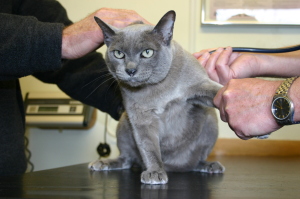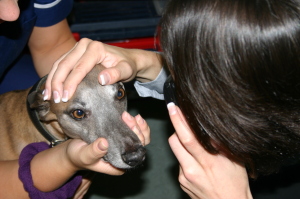New open access research published in Veterinary Record indicates that almost half of veterinary consultations last longer than the 10 minutes allocated and that preventive medicine consultations last just as long as consultations for a specific health problem. The results raise issues to do with practice management, as well as the importance of educating veterinary students about comorbidities.
Consultations are a major part of small animal practice, with small animal vets often meeting a large number of clients and patients each day. Generally speaking, 10 minutes is allocated for each consultation, but the amount of time required to address all of the client’s concerns can often exceed 10 minutes. Furthermore, consultations are often complex interactions in which a wide range of potential health problems are discussed.
In human medicine, large amounts of research has been conducted into the nitty gritty of how consultations work and the types of issues that are discussed. This has shown that more lengthy consultations tend to lead to more issues being discussed and better detection and management of certain conditions. However, until now, veterinary consultations have been less well understood.
A group of researchers at the University of Nottingham recently sought to fill these knowledge gaps by conducting some in-depth research into small animal consultations in the UK. They wanted not only to better understand how long consultations last and what happens during a consultation, but also to develop a tool that would make it easy to analyse veterinary consultations in depth. Their results are reported in two articles recently published in Veterinary Record (found here and here), both of which are open access.
Natalie Robinson, one of the authors of the studies, explains the idea behind them.
‘When the Centre for Evidence-based Veterinary Medicine was first set up at the University of Nottingham, one of our first questions was “What should our research priorities be?”’, she said. ‘We needed to make sure our research was relevant to first-opinion practitioners, so examining the veterinary caseload to determine what practitioners see and do every day was the first logical step. By examining consultations in greater depth, we can start to identify the important decision-making points during the consultation. This will allow us to generate new evidence which can support veterinary decision-making and hopefully lead to improved patient care.’
Eight small animal practices in England and Scotland took part in the study. The team observed a large number of consultations in detail, and recorded what they saw using a specially developed tool.

Timings
One of the studies assessed how long consultations tended to last. The researchers timed 182 consultations involving 203 animals in two of the participating practices in England.
They found that there was a huge range in the length of consultations. The shortest consultation observed lasted for just 51 seconds, while the longest lasted for 36 minutes and 45 seconds. Almost half (48 per cent) of consultations exceeded the 10 minutes allocated. Perhaps unsurprisingly, consultations in which more problems were discussed, or which involved more patients, tended to last longer.
‘One of the things that surprised us is that preventive medicine consultations lasted just as long as consultations for a specific health problem’, said Dr Robinson. ‘Preventive medicine consultations are often seen as “quick and easy” but the results would suggest that this is not necessarily the case. In fact it would appear that preventive medicine consultations may be even more complex than other types of consultations, with even more problems discussed, and so are an important part of the healthcare of our pets.’
Looking at consultations in more detail
In another part of the study, a total of 1720 consultations (involving 1901 patients) were recorded and analysed. The results make interesting reading.
The first key finding was that a total of 4486 problems were discussed for the 1901 patients, an average of 2.4 problems per patient. In almost two-thirds of consultations, more than one problem was discussed. The highest number of problems discussed in one session was eight.
‘Interestingly, fewer problems were discussed for rabbits than for cats or dogs,’ said Dr Robinson. ‘While there could be a range of reasons for this finding, it could be that vets and owners are less familiar with identifying health problems in this species. Previous work within our group has suggested that vets feel there is less information available for rabbits than for dogs or cats, so it could be that rabbit medicine is an important area for the generation of new evidence.’ The previous study she refers to was published in Veterinary Record earlier this year.

More health problems were also discussed in consultations involving older animals, while when younger animals were presented, preventive medicine was more likely to be discussed.
While the results answer some questions, they also raise others. For example, if consultation length varies so widely, should vets begin to offer different types of appointments? The authors suggest that practices could set up geriatric clinics specifically aimed at older animals in which appointments are longer, ensuring enough time for all problems to be discussed.
They also note that the findings could have implications for veterinary education, as they show that comorbidities are common and consultations can be complex.
‘We need to make sure that training in consultation skills adequately prepares veterinary undergraduates for the realities of first-opinion practice,’ said Dr Robinson. ‘The findings suggest that first-opinion consultations often involve dealing with multiple problems and comorbidities within a single consultation, meaning the decision-making process is often complex.’
‘Ultimately, we need more evidence to support decision-making in patients with comorbidities, which will benefit not only undergraduate education, but also the wider veterinary profession and the patients they treat.’